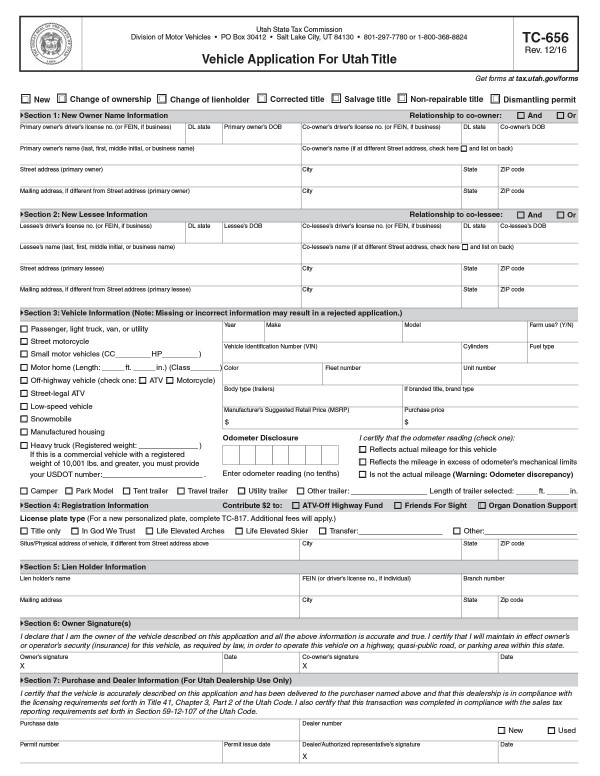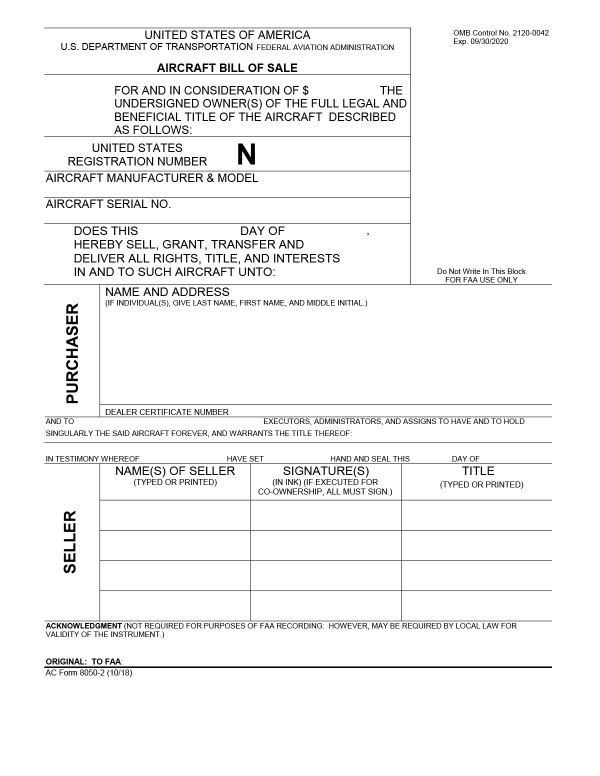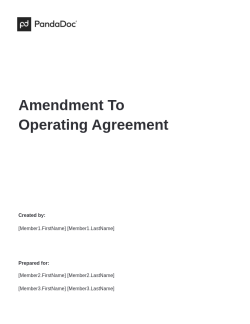Important Terms for a Bill of Sale
- Property location: This specifies the location of the item being sold, which can be especially important if the item is in a different state.
- Seller: This includes the seller’s information, such as name and address. This section can also list any additional sellers.
- Buyer: This specifies the buyer’s information. This section can list any additional buyers.
- Sales tax: This specifies whether sales tax will be included, how much it will be, and whether or not it is included in the price.
- Property: This section includes the date of the property transfer as well as any special conditions to the sale like “under warranty” or “as-is.” The VIN, plate number, and odometer reading for vehicles are listed here.
- Witness information: If a witness is present to sign the bill of sale, their full name, address and other contact information will be listed here. The witness can be either a public notary or a party agreed upon by the buyer and seller.
- As-is: This term means that the buyer is agreeing to purchase the item in its current state at the time of sale. By signing a bill of sale agreeing to purchase something as-is, the buyer is agreeing that they’ve had the opportunity to inspect the item and found it to their satisfaction.
- Gift: This identifies whether the item is being sold as a gift to the recipient, which will be important for tax purposes the following year.
- Trade-In: In the event one item is being traded for another, this section of the bill of sale will verify that the two items are equal in value.
- Certification/Signature: The signature of the seller and/or buyer, depending on the form, finalizes the transfer. In-person signatures are always valid. Digital signatures are valid if they are done through a certified digital signature provider. PandaDoc documents offer the option for legal digital signatures.
1. Utah Bill of Sale Requirements
While drafting a bill of sale is good standard practice for the purchase of many big-ticket items, they are required for the purchase of boats or motor vehicles in the state of Utah. You can use the form the state of Utah provides (Form TC-843), or you can draft your own.
If you do decide to draft your own bill of sale, be aware that there are a number of requirements you need to satisfy in the state of Utah.
Why Use a Bill of Sale?
Besides satisfying state legal requirements, a bill of sale can prove useful for several other reasons. It provides proof of ownership for the buyer, which can help avoid legal disputes. For the seller, a bill of sale can protect them from liability concerns over how an item is used after the sale.
Additional Considerations
Language requirements
You may create your own bill of sale in any language you choose, but bill of sale forms from the Utah government are only provided in English. You may have these forms translated by an interpreter, but the interpreter must be certified by the state. Certified translations will be accepted to meet Utah’s legal requirements.
If you have trouble finding the right state-certified translator for your bill of sale, Utah maintains an online directory of approved translators.
Number of Copies
It’s a legal requirement to provide a copy of the bill of sale for a motor vehicle transaction to the state Department of Motor Vehicles (DMV). The buyer and seller will also want to retain a copy, so a total of three copies would be required in these cases.
For all other transactions, it’s enough for the buyer and the seller to each keep a copy.
Junk Vehicles
In the state of Utah, when a vehicle is totaled, it retains its title. However, that title is considered “branded.” Even if the vehicle is later repaired, the title retains its brand.
Sellers of vehicles with branded titles must provide written notice of the brand to the buyer before the sale. If a branded vehicle is being sold at a dealership, the dealer must also display a notice on the car’s windshield. Cars with branded titles often do not qualify for full insurance, so potential buyers should consider carefully whether or not they want to make this kind of transaction.
After Purchasing a Vehicle
The bill of sale is not enough to complete a vehicle transfer in Utah. Several additional documents are required before the transaction is official.
If You’re the Seller
Sellers have comparatively few things to do to complete a vehicle transfer. They must provide the vehicle title to the buyer within 48 hours of the transaction. If the title has been lost, Utah residents can apply for a duplicate title.
If the vehicle is 10 years old or younger, sellers must provide an Odometer Disclosure Statement along with current copies of the inspection and emissions certificates and the current registration.
Finally, sellers must report the sale to the Utah DMV. This can be done by mail, fax, or online. Sellers must provide some basic information about the vehicle, including:
- Make
- Model
- Year of production
- Plate number
- Vehicle identification number (VIN)
If You’re the Buyer
Buyers have 60 days to title and register their new vehicles in Utah. To complete the registration process, buyers must provide a:
- Vehicle title
- Certificate of inspection
- Emissions inspection certificate (if applicable)
- Bill of sale
- Application for Utah Title (Form TC-656)
- Proof of insurance
- Registration and titling fees
Buyers must also pay sales tax on their vehicles before the transfer is complete. Sales tax is based on the amount shown on the bill of sale as well as the current fair market value for the vehicle.
2. Utah Car (Vehicle) Bill of Sale
It’s important to get or give a bill of sale when buying or selling an automobile in Utah to avoid being defrauded during the process. The State of Utah provides an official summary of the buyer and seller responsibilities, as well as some risks, during motor vehicle transactions.
While the bill of sale doesn’t constitute ownership on its own — only the title can do that — it does provide proof of transfer of the title. This proof is helpful for your records and important for resolving tax issues, should they arise, or even when dealing with legal recourse and civil matters at the DMV. You can find the official template for a motor vehicle bill of sale here.
3. Utah Firearm Bill of Sale
In Utah, firearm bills of sale require more personal information about the buyer and seller than some other types of bills of sale. Both the buyer and seller will have to provide their driver’s license numbers in addition to their names and addresses in order for the state to maintain a record of firearm sales.
It is highly recommended that all firearm transactions produce a bill of sale to have an accurate record of where and when the firearm was purchased. It is illegal under federal law for Utah residents to sell firearms outside of the State of Utah.
Firearm bills of sale also require the buyer to assert that they do not meet one of the disqualifiers for owning a firearm, such as a history of violence, a criminal record, or certain records of mental health disorders.
4. Utah Boat Bill of Sale
The process for completing a boat or vessel transaction in the state of Utah is slightly more complicated than for other types of vehicles. The category of “vessel” includes motorboats, sailboats, and jet skis. While dealers will often take care of the paperwork for you, private sales will require you to assemble some forms on your own.
Vessel bills of sale are required to be notarized by a notary public and include statements from the seller about the vessel’s condition, details about the machine specifics of the vessel, and proof of payment for registration fees.
5. Utah Horse or Livestock Bill of Sale
Horse bills of sale in Utah include information on the horse, including:
- Age
- Name
- Breed
- Gender
- Registration number
Livestock bills of sale will include the number of animals if they are sold in large amounts. While individual horses don’t require rigorous branding and inspection, sales of large quantities of livestock such as hogs, cattle, and sheep intended for consumption require a more exhaustive documentation process.
6. Utah Aircraft Bill of Sale
Aircraft bills of sale in Utah include the make, model, and year of the aircraft as well as registration and serial numbers. The State of Utah’s Department of Transportation website provides an aircraft bill of sale form (Form AC 8050-2) which complies with FAA regulations.
7. Utah General Bill of Sale
A general bill of sale is used to prove the purchase of any non-regulated item. The information required is often the general and bare minimum information that is required in any bill of sale:
- Purchase price
- Date
- Contact information
- Signatures








